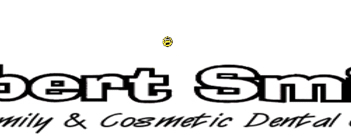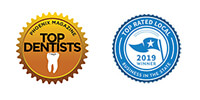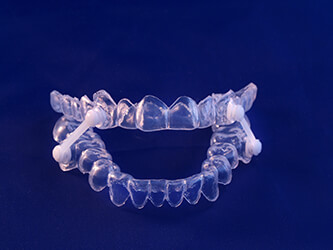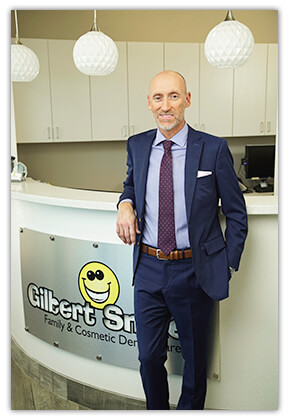Sleep Apnea
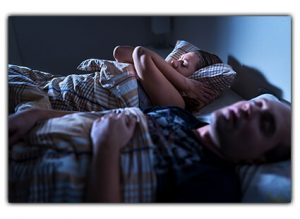 The Greek word “apnea” literally means “without breath.” Obstructive sleep apnea (OSA) is caused by a blockage of the airway, usually when the soft tissue in the rear of the throat collapses and closes during sleep. This condition is often associated with loud snoring. With each apnea event, the brain briefly arouses people with sleep apnea in order for them to resume breathing, but consequently sleep is extremely fragmented and of poor quality.
The Greek word “apnea” literally means “without breath.” Obstructive sleep apnea (OSA) is caused by a blockage of the airway, usually when the soft tissue in the rear of the throat collapses and closes during sleep. This condition is often associated with loud snoring. With each apnea event, the brain briefly arouses people with sleep apnea in order for them to resume breathing, but consequently sleep is extremely fragmented and of poor quality.
Sleep apnea is very common, as common as adult diabetes, and affects more than 12 million Americans according to the National Institutes of Health. Risk factors include being male, overweight, and over the age of forty, but sleep apnea can strike anyone at any age, even children. Yet still, because of the lack of awareness by the public and healthcare professionals, the vast majority remain undiagnosed and therefore untreated, despite the fact that this serious disorder can have significant consequences.
Untreated, sleep apnea can cause high blood pressure and other cardiovascular disease, memory problems, weight gain, impotency, and headaches. Moreover, untreated sleep apnea may be responsible for job impairment and motor vehicle crashes. Spouses also suffer due to the arousals and loud snoring that prevent them from getting quality sleep. Fortunately, sleep apnea can be diagnosed and treated. Several treatment options exist, including:
Positional therapy:
Apneas tend to be worse when sleeping on the back (the supine position) as gravity makes it more likely for the tongue to fall back over the airway and/or for the airway muscles and other tissues (like the tonsils) to collapse and block the airway. Hence not sleeping on the back may reduce the number of apneas. To avoid the supine position, some people use homemade remedies, such as putting tennis balls in a tube sock and pinning the sock to the back of their nightshirt. Others purchase products such as a tube or cushion designed specifically to prevent supine sleeping.
Weight loss:
Sleep apnea can be weight-related. Additional fat around the neck may make the airway narrower, making obstructions more likely to occur. For some overweight people, especially those with mild cases, losing weight can be an effective treatment. Or weight loss may reduce the severity of the sleep apnea. However, it may be hard to lose weight when you have untreated sleep apnea: you may be too tired to exercise and you may eat to stay awake. Also, it may take some time before the weight loss is achieved, so in light of the potential consequences of untreated OSA, using another treatment option while working towards the weight loss goal may be an option. Losing weight may also improve your health in other ways, but it is always advisable to talk to your doctor before beginning a weight-loss program. Remember that sleep apnea occurs in thin people as well; the airway can close during sleep for a number of reasons, not just excess weight.
Surgery:
The intention of surgery is to create a more open airway so obstructions are less likely to occur. These surgeries often include removal or reduction in size of the soft palate, uvula, tonsils, and tongue. These procedures are often painful, ineffective, and they are irreversible.
Continuous Positive Airway Pressure (CPAP):
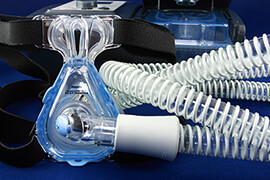 CPAP works by blowing pressurized room air through the nasal passages and into the airway at a pressure high enough to keep the throat open. This pressurized air acts as a “splint.” The pressure is set according to the patient’s needs at a level that eliminates the apneas that cause awakenings and sleep fragmentation. Pressure that is too low will not be as effective in eliminating the apneas. Nasal CPAP is an effective treatment option for obstructive sleep apnea and snoring when used on a regular basis. It is still considered the “gold standard” in much of the medical community. However, many patients find CPAP uncomfortable and inconvenient and are unwilling or unable to wear it long enough to experience the benefits. Many find it hard to sleep soundly with large volumes of cold, dry air blown through and around their nose and face. A patient may sleep through the night, only to wake with dry and congested nasal passages. Over time the nose, sinuses and throat may become irritated and/or inflamed. Other patients complain of the large facemask that must be worn with the attached air hose that can prevent normal changes in body position. Some patients say that wearing the apparatus makes them feel “suffocated” and “bloated”. The units are inconvenient to pack and travel with due to their size and need for set-up. Less than fifty percent of patients report regular use of their CPAP machines over a 5 year period.
CPAP works by blowing pressurized room air through the nasal passages and into the airway at a pressure high enough to keep the throat open. This pressurized air acts as a “splint.” The pressure is set according to the patient’s needs at a level that eliminates the apneas that cause awakenings and sleep fragmentation. Pressure that is too low will not be as effective in eliminating the apneas. Nasal CPAP is an effective treatment option for obstructive sleep apnea and snoring when used on a regular basis. It is still considered the “gold standard” in much of the medical community. However, many patients find CPAP uncomfortable and inconvenient and are unwilling or unable to wear it long enough to experience the benefits. Many find it hard to sleep soundly with large volumes of cold, dry air blown through and around their nose and face. A patient may sleep through the night, only to wake with dry and congested nasal passages. Over time the nose, sinuses and throat may become irritated and/or inflamed. Other patients complain of the large facemask that must be worn with the attached air hose that can prevent normal changes in body position. Some patients say that wearing the apparatus makes them feel “suffocated” and “bloated”. The units are inconvenient to pack and travel with due to their size and need for set-up. Less than fifty percent of patients report regular use of their CPAP machines over a 5 year period.
Avoiding alcohol and other CNS depressants:
Alcohol and medications that act as central nervous system (CNS) depressants, such as pain killers, sedatives, and muscle relaxants, can worsen sleep apnea by relaxing the airway muscles further and/or by reducing the respiratory drive and causing more apneas to occur. Hence avoiding alcohol and CNS depressants close to bedtime may be helpful. Ask your doctor or pharmacist if any of the prescription or over-the-counter drugs you take can affect your sleep apnea.
Oral appliances:
Oral appliance therapy involves the selection, design, fitting and use of a custom designed oral appliance that, when worn during sleep, maintains an opened, unobstructed airway in the throat. Oral appliances that treat snoring and obstructive sleep apnea are devices worn in the mouth, similar to orthodontic retainers or sports mouthguards. They have several advantages over other forms of therapy. Oral appliances are comfortable and easy to wear and care for. They are small and convenient, making them easy to carry with you when you travel. Treatment with oral appliances is reversible and non-invasive. Because of their effectiveness and advantages, the American Academy of Dental Sleep Medicine now considers oral appliances as the best choice to initially treat mild to moderate sleep apnea and snoring.
Oral appliances work in several ways:
- By repositioning the lower jaw (mandible) forward to open the airway and prevent tissues from collapsing during sleep.
- By stabilizing the lower jaw and tongue.
- By increasing the muscle tone of the tongue.
Oral appliance therapy can take from several weeks to several months to complete. Even after the initial treatment phase is complete, follow-ups will be needed to be sure that treatment remains successful and to evaluate the response of your teeth and jaws.
Dr. Swain has undergone extensive continuing education in dental sleep medicine to help guide you through the diagnosis process and work with your doctor and/or sleep specialist to determine how you would best be treated. If you are diagnosed with mild to moderate sleep apnea, we may be able to successfully treat you with oral appliances in our office. Call us to schedule a consultation and initial screening to help get you back to more restful and healthy nights of sleep.
Call: (480) 558-3100
1661 S. Val Vista Dr, Suite C-101
Gilbert, AZ 85295
Hours of Operation:
Monday / 7am – 5pm
Tuesday / 7am – 5pm
Wednesday / 7am – 6pm
Thursday / 7am – 5pm
Friday / By Appointment

